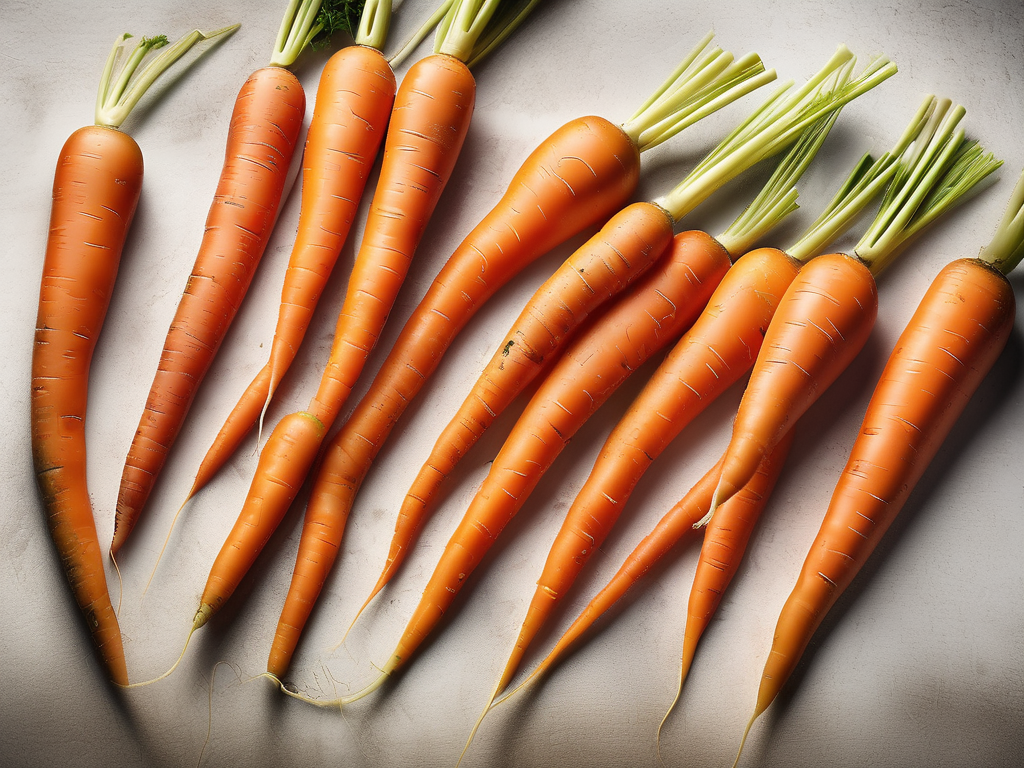
The Ultimate Guide to Storing Carrots to Prevent Spoilage
Get Your Free Food Safety Cheat Sheet
30 most common foods with instant answers. Print it and stick it on your fridge—completely free!
The Ultimate Guide to Storing Carrots to Prevent Spoilage
Carrots are not only a versatile and nutritious vegetable but also a popular choice for many dishes. Whether you grow your own carrots or buy them from the store, proper storage is essential to maintain their freshness and flavor. In this comprehensive guide, we will discuss the best methods for storing carrots to prevent spoilage and ensure they stay fresh for as long as possible. (Carrots)
Why Proper Carrot Storage is Important
Proper storage of carrots is crucial for maintaining their quality and preventing spoilage. Carrots are prone to dehydration, mold growth, and loss of nutrients if not stored correctly. By following the right storage methods, you can extend the shelf life of carrots and enjoy them in various recipes without any concerns about their freshness.
Factors Affecting Carrot Spoilage
Several factors can contribute to the spoilage of carrots if not stored properly. These factors include:
- Temperature fluctuations
- Exposure to light
- High humidity levels
- Improper ventilation
Now, let's delve into the best methods for storing carrots to prevent spoilage:
1. Choose the Right Carrots
- Select fresh, firm carrots without any blemishes or soft spots.
- Opt for carrots with their tops intact, as they help retain moisture and freshness.
2. Remove the Tops
- Cut off the green tops of the carrots before storing them. The tops can draw moisture from the roots and cause them to wilt faster.
3. Store in a Cool and Dark Place
- Place the carrots in a perforated plastic bag or a vegetable storage bag to maintain humidity levels.
- Store the carrots in the crisper drawer of the refrigerator, where the temperature is around 32-40°F (0-4°C).
- Avoid storing carrots near ethylene-producing fruits like apples and bananas, as ethylene can cause them to spoil faster.
4. Store in Sand or Sawdust
- For longer-term storage, consider placing the carrots in a container filled with slightly damp sand or sawdust.
- Make sure the carrots are not touching each other to prevent the spread of mold or rot.
5. Check and Rotate Regularly
- Periodically check the stored carrots for any signs of spoilage, such as mold or soft spots.
- Rotate the carrots to ensure even air circulation and prevent them from sticking together.
Conclusion
Proper storage is essential for extending the shelf life of carrots and preventing spoilage. By following the tips outlined in this guide, you can ensure that your carrots remain fresh, crisp, and flavorful for an extended period. Remember to choose fresh carrots, remove the tops, store in a cool and dark place, consider using sand or sawdust for long-term storage, and check and rotate them regularly. With these simple steps, you can enjoy delicious and nutritious carrots in your meals without any concerns about their quality. Start storing your carrots the right way today!
Whether you use carrots in salads, soups, or as a healthy snack, proper storage will help you make the most of this versatile vegetable. Implement these storage methods to keep your carrots fresh and flavorful for all your culinary creations. (Carrots)
Related Posts
Here are some other articles you might find helpful:
Authoritative Food Safety References
These agencies and university labs inform every tip and health precaution we publish.
USDA FoodKeeper – Cold Storage Guidelines
Official refrigerator, freezer, and pantry timelines maintained by the U.S. Department of Agriculture.
Visit USDA FoodKeeperFDA Produce Safety Rule & Grower Guidance
Field-to-fridge handling practices that prevent contamination of fruits, vegetables, and leafy greens.
Visit FDA Produce SafetyCDC Foodborne Illness Prevention Hub
Surveillance-backed guidance on pathogens, symptoms, and steps to reduce foodborne illness risk.
Visit CDC Food SafetyUC Davis Postharvest Technology Center
University research detailing optimal storage atmospheres for produce after harvest.
Visit UC Davis PostharvestPenn State Extension – Home Food Preservation & Safety
Peer-reviewed extension bulletins on safe canning, chilling, and reheating practices.
Visit Penn State ExtensionGet Your Free Food Safety Cheat Sheet
30 most common foods with instant answers. Print it and stick it on your fridge—completely free! Want more? Upgrade to the complete guide with 70+ foods.
Scan your food directly and get instant safety info using our AI-powered camera feature.